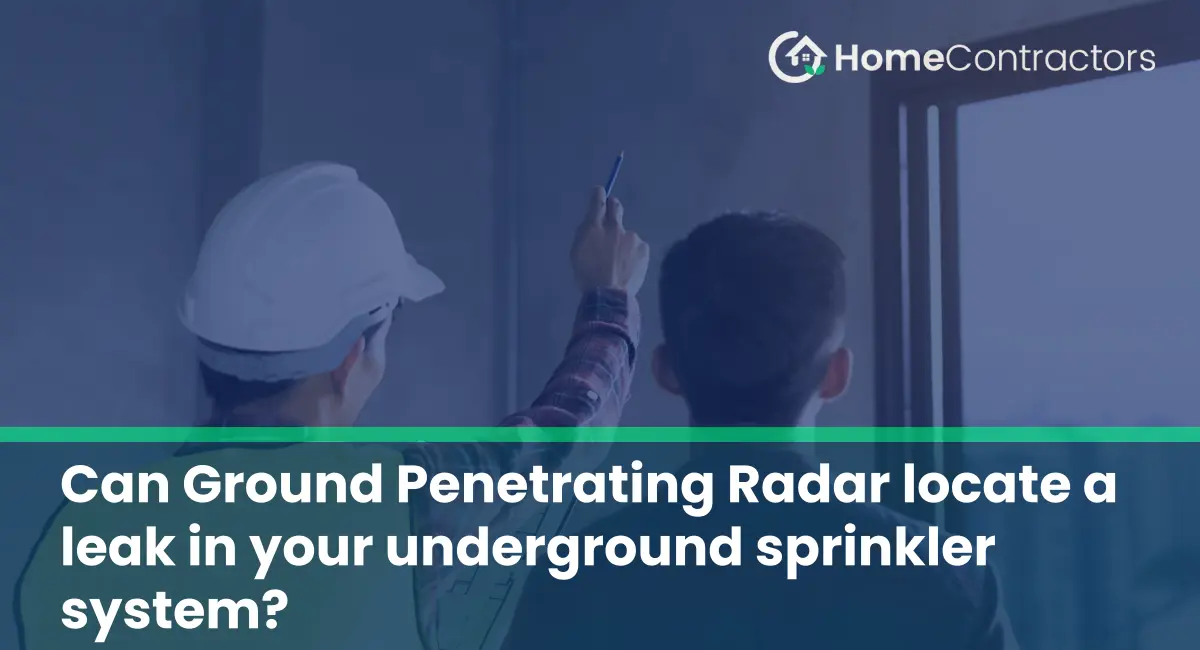Many homeowners rely on underground sprinkler systems to efficiently water their lawns and gardens. However, over time, these systems may develop leaks, leading to water waste, increased utility bills, and potential damage to the surrounding landscape. Detecting a leak in an underground sprinkler system can be a daunting task, as it involves locating the issue beneath layers of soil and grass. One technology that has gained popularity in recent years for this purpose is Ground Penetrating Radar (GPR). In this article, we explore the effectiveness of GPR in locating leaks in underground sprinkler systems.
Understanding Ground Penetrating Radar (GPR)
Ground Penetrating Radar is a geophysical imaging technique that uses electromagnetic radiation to detect subsurface features and anomalies. The system consists of a control unit that sends out high-frequency radio waves through an antenna, which are then reflected back when they encounter changes in material composition or density. By analyzing the echoes received, the system can generate detailed images of the subsurface, allowing for the identification of various objects or structures.
How Ground Penetrating Radar Works
When it comes to locating leaks in underground sprinkler systems, GPR works by detecting the presence of water underground. A leak in the system would result in an accumulation of water in the surrounding area, creating an anomaly in the soil’s moisture content. The GPR system can identify these variations, allowing professionals to pinpoint the exact location of the leak. By detecting the leak early on, homeowners can address the issue promptly, minimizing water waste and potential damage to their property.
The Pros of Using Ground Penetrating Radar
- Non-destructive and Non-intrusive: GPR is a non-destructive method that does not require any physical alterations to the property. Unlike traditional techniques that may involve digging up the entire sprinkler system, GPR allows for precise detection without causing further damage.
- Quick and Efficient: GPR provides real-time data interpretation, allowing professionals to quickly identify and locate leaks in the underground sprinkler system. This helps save time and effort in comparison to other conventional methods.
- High Accuracy: GPR offers accurate results, as it can detect even small leaks in the system. This high level of accuracy aids in efficient repairs and prevents unnecessary excavation.
- Cost-effective: By accurately identifying the leak’s location through GPR, homeowners can avoid costly repairs through trial and error. The precision of this method results in more targeted repairs, reducing the time and money spent on unnecessary excavation.
The Limitations of Using Ground Penetrating Radar
- Depth limitations: The efficiency of GPR is limited by the depth at which the underground sprinkler system is installed. GPR is most effective for detecting leaks in shallow systems, typically up to 10-15 feet deep. Beyond that depth, the accuracy and resolution of the images produced by GPR may decrease.
- Soil and material conditions: Certain soil and material conditions can affect the performance of GPR. Highly conductive or clayey soils, as well as areas with high water content, can limit the penetration depth and image quality, making it more challenging to detect leaks accurately.
- Operator training and expertise: GPR requires a skilled operator who understands the system’s capabilities and can interpret the data accurately. Misinterpretation of the data collected can lead to false positives or negatives, compromising the effectiveness of the leak detection process.
Ground Penetrating Radar is a reliable and efficient method for locating leaks in underground sprinkler systems. Its non-intrusive nature, quick results, high accuracy, and cost-effectiveness make it a preferred choice for both homeowners and professional technicians. Although GPR may have some limitations related to penetration depth and soil conditions, its overall benefits outweigh these drawbacks. Investing in GPR technology can help save time, money, and water by promptly identifying and repairing leaks in underground sprinkler systems.
